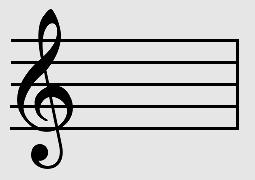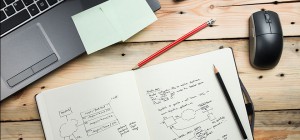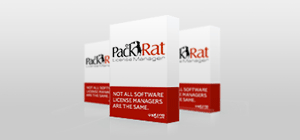
Multiple Users One iTunes Account
iTunes, iPad and iPod are trademarks of Apple Inc.
The Beginning
Life in my family was simple. We started with an iPad and soon followed with an iPod. iTunes was installed on my Windows PC with my Apple ID, I purchased the music and apps, I installed them.
Since then, 2 more iPads and 2 more iPods have been adopted by my family as my children have grown up and wanted their own music and apps from iTunes. With these devices also requiring periodic connection to iTunes for maintenance, my workload for family Apple IT support was rapidly growing.
I needed a way that we could all use iTunes – with one Apple ID so that I only had to enter the password for an iTunes purchase.
Decentralise (or Centralise)?
The problem was the sharing of a resource (iTunes) between multiple consumers (users) – and to me it could be solved in the following two ways:
- Decentralising – everyone would have their own Apple ID along with a separate installation of iTunes on their own PC; or
- Centralising – iTunes would be hosted in one place accessible by all users.
With already too many accounts and passwords to manage, I decided not to follow the trend to decentralise. Instead, I would centralise and use a server to host iTunes. With only 1 iTunes installation, everyone could Remote Desktop to the server to access iTunes using their own Windows account. I needed to find what resources iTunes maintained and where they were stored.
iTunes Resources
Configuration Data
After some research, I discovered that iTunes maintains configuration data in a library and preferences files.
Library
The iTunes’ library is a folder structure, consisting of playlists, the media you have added and how you have organised it and is located by default under the path:
C:\Users\<user>\Music\iTunes
The library is what we will need to move off into a common area, that is accessible by all users. Given that this is a significant amount of configuration data, I suggest that you also back it up for disaster recovery purposes. Hard disks do fail and a backup of the iTunes library will make a restoration of your iTunes installation a breeze.
Preferences Files
iTunes stores your (user) preferences in two xml files located under the paths:
C:\Users\<user>\AppData\Local\Apple Computer\iTunes\iTunesPrefs.xml C:\Users\<user>\AppData\Roaming\Apple Computer\iTunes\iTunesPrefs.xml
If you have made changes to your preferences in iTunes, like changing the default format of file creating when importing music from a CD for example, you will want to distribute your version of the two files to your users. The location that iTunes stores your Music Media data (music files) is also stored in these preferences files. If you store your Music Media for iTunes in a location that is not the default location (like on a NAS), then you will definitely want to distribute your two preference files to your users.
Note that the “AppData” directory is hidden. If you cannot see it, then you will need to “Show Hidden Directories”. Google that search along with your operating system for instructions on how to do this.
Music Media Data
By default, iTunes stores its Music Media data under the path:
C:\Users\<user>\Music\iTunes
I have a NAS on my network and use it to store my iTunes Music Media data. As this NAS location is stored in my iTunes preferences files, I had to distribute them to my users in their setup. Be careful that you grant your users permissions to access (read and write) this NAS location, otherwise iTunes will ignore the NAS location specified in the preferences files and overwrite it with the default location.
Building Your Server
Install iTunes
Step 1: Once you have a Windows PC designated as a server, create user accounts – an administrator for yourself (<me>), and non administrators for your family members (<user_1>, <user_2>, …, <user_n>).
Step 2: As the administrator, install iTunes.
Install iTunes Library
Step 3: On your PC that is currently hosting iTunes, copy the source folder:
C:\Users\<me>\Music\iTunes
and paste it into your new iTunes server (destination):
D:\backedup
The above destination directory is an example. If you have a drive D: (as a second partition on your primary drive or as a separate drive), then this is a good candidate location to choose.
Initialise iTunes for each User (<user_n>)
Step 4: Login as your User (<user_n>) and start iTunes, the library will be empty and configuration set as default.
Step 5: Close iTunes.
Step 6: Copy your baseline iTunes configuration preferences files from your source directories:
C:\Users\<me>\AppData\Local\Apple Computer\iTunes\iTunesPrefs.xml C:\Users\<me>\AppData\Roaming\Apple Computer\iTunes\iTunesPrefs.xml
into your users (<user_n>)’s destination directories:
C:\Users\<user_n>\AppData\Local\Apple Computer\iTunes\iTunesPrefs.xml C:\Users\<user_n>\AppData\Roaming\Apple Computer\iTunes\iTunesPrefs.xml
Having started iTunes as the user, these files will already exist and you will have to overwrite them when copying.
Step 7: Delete the (empty) library iTunes has just created (upon first start as user <user_n>):
C:\Users\<user_n>\Music\iTunes
Step 8: Create a hard symbolic link from the library to your common library by starting a Command Prompt (with elevated rights, “Run as Administrator”):
Type the following command:
mklink /J C:\Users\<user_n>\Music\iTunes D:\backedup\iTunes
If the path to your library contains spaces, you will need to place quotes around the path (for example “D:\My Backup\iTunes”).
Step 9: Start iTunes and check that you can now see your music library.
Step 10: Repeat steps 4 – 9 for your remaining users (<user_1> … <user_n>).
Summary
The first time you purchase from iTunes as one of your users, Apple will send you a notification email to inform you that your iTunes account has been used from an unrecognised user (Windows) account. Apple is trying to help protect your account by detecting this new usage and requires no action from you.
Remember to now include your iTunes Library (configuration data, D:\backedup\iTunes) as part of your backup regime and backup your two preferences files as well. If you haven’t been backing up your iTunes Music Media Data, then I urge you to do this too.
Enjoy your new found spare time as your family actively use iTunes for themselves to maintain their own Apple devices.




